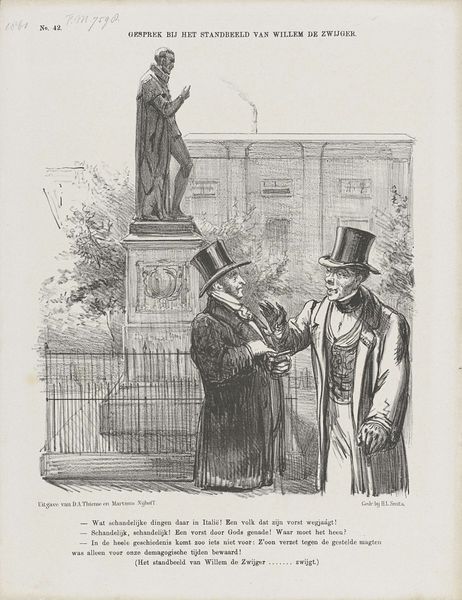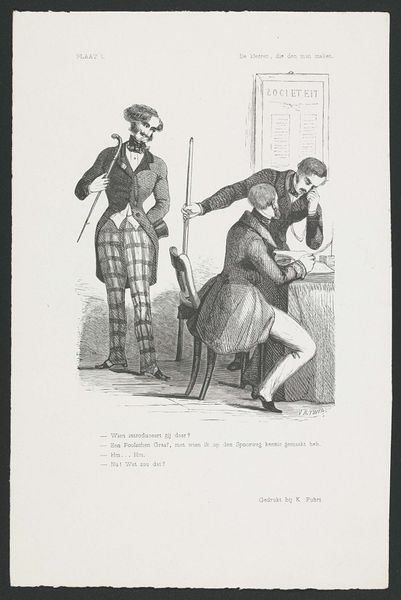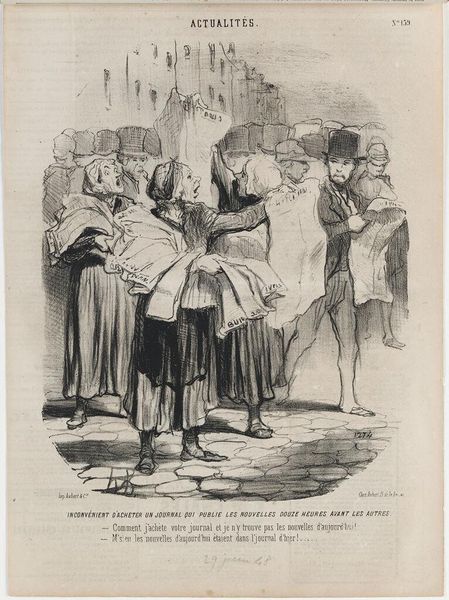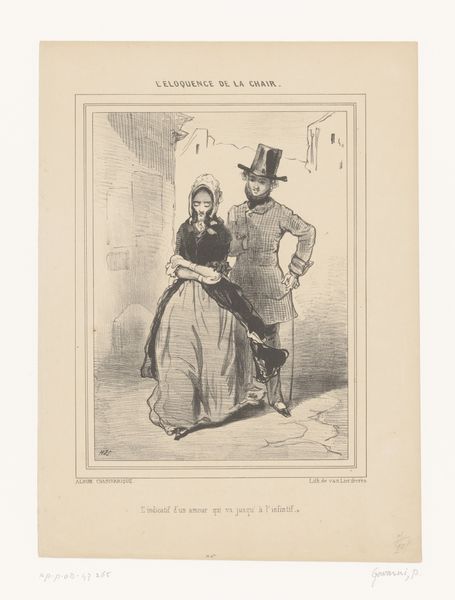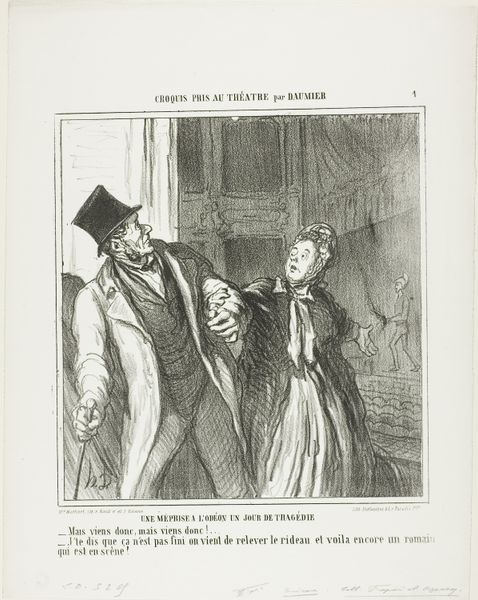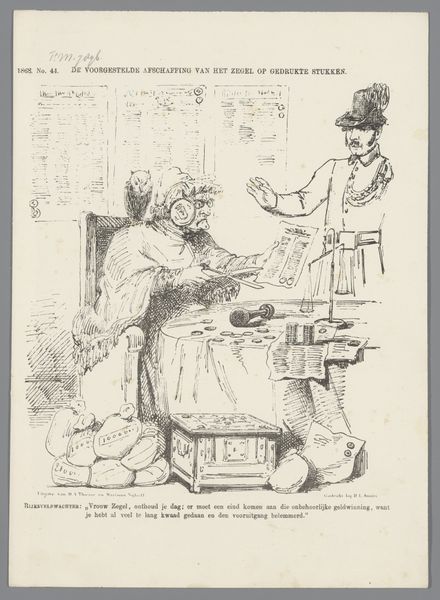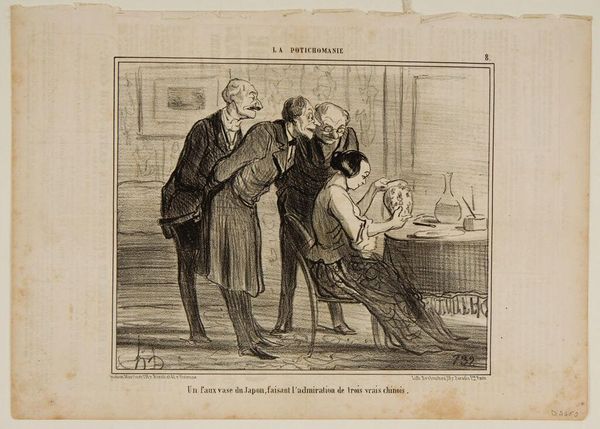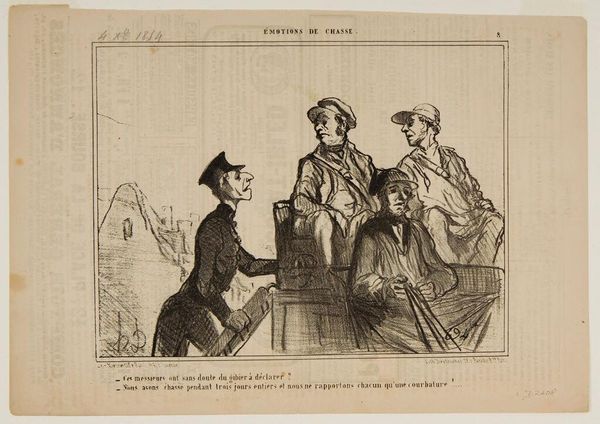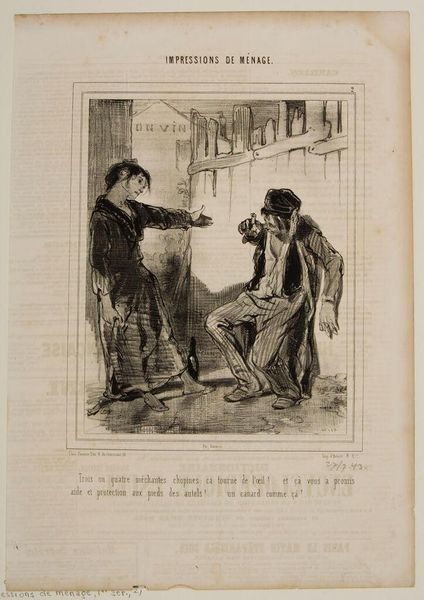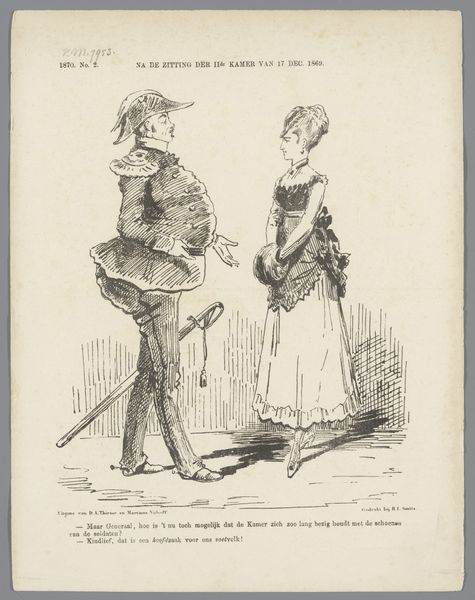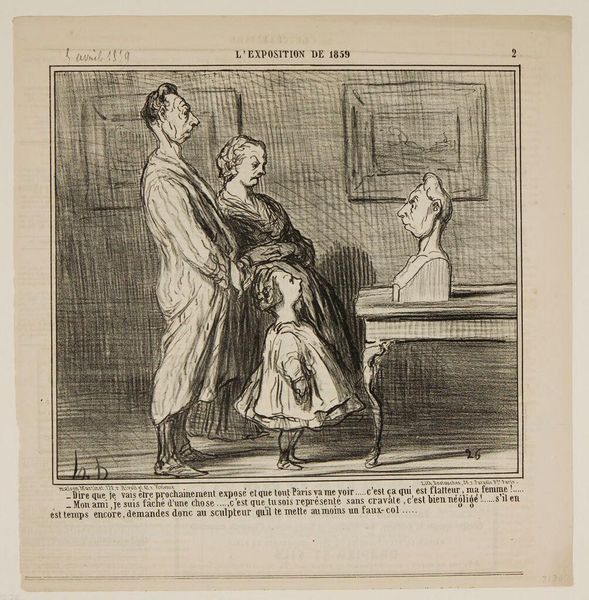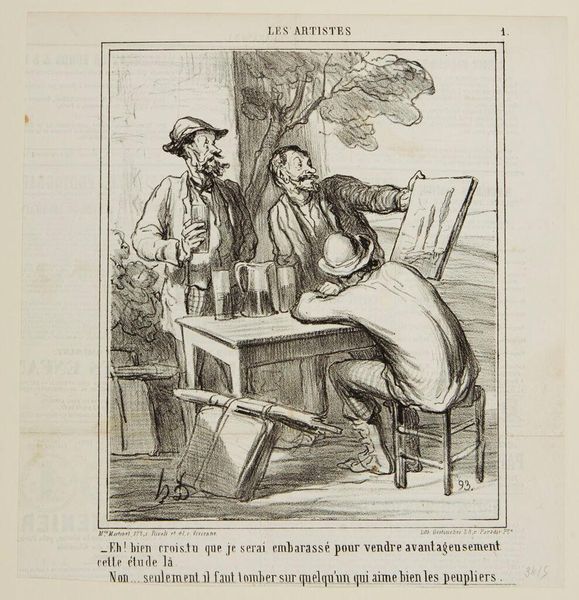
Spotprent op de crisis tusen de ministers van Koloniën en Buitenlandse Zaken, 1861 1861
0:00
0:00
graphic-art, lithograph, print
#
graphic-art
#
narrative-art
#
lithograph
# print
#
caricature
#
genre-painting
Dimensions: height 275 mm, width 215 mm
Copyright: Rijks Museum: Open Domain
Curator: Look at the tense energy of this lithograph. The print before us, created by Johan Michael Schmidt Crans in 1861, is titled "Spotprent op de crisis tussen de ministers van Koloniën en Buitenlandse Zaken." It depicts...well, what’s your initial reading of the work? Editor: Austere, certainly. The sharp lines of the lithograph, the cool gray tones... there’s a palpable sense of tension. A building looms in the background, with dark smoke billowing above it, furthering that mood. Curator: Indeed. The print shows a man seated on a fence pointing towards that looming factory or industrial building. A woman stands nearby, seemingly lost in thought or concern. The tension, I would argue, arises from a confluence of symbols: the pointing figure embodies direction or blame, while the woman perhaps symbolizes uncertainty or the weight of the situation. Editor: So you see the seated man as active and accusatory? His stance certainly implies movement, direction... He might well represent colonial interests dictating a certain course of action. The woman’s closed-off posture, clutching what looks like documents, lends itself to cultural analysis: it hints at inner turmoil, at perhaps the ethical conflicts inherent in colonial policy, or a felt empathy. Her dress seems almost purposefully simple compared to the implied wealth behind that factory. Curator: Consider how Crans uses the rigid lines of the fence in contrast to the slight curve of the woman's skirt and hat. These subtle formal devices are important. The fence might also signify division or a boundary, appropriate given the reference in the title to a crisis between different political bodies. What I find remarkable is how Crans manages to imbue a seemingly simple composition with such a wealth of narrative and implication through his use of line and form. Editor: Absolutely. What remains compelling is how the symbols of colonial endeavor intersect with what might then be considered period-appropriate understandings of individual responsibility. That the print refers to another painting suggests that visual interpretations of these issues had a wider circulation and impact. Curator: An important consideration. It’s rewarding to unpack how this lithograph represents a specific historical moment but also points to larger cultural anxieties. Editor: Yes, it gives me a deeper understanding of not just the historical crisis it references, but the weight of its themes across time.
Comments
No comments
Be the first to comment and join the conversation on the ultimate creative platform.
